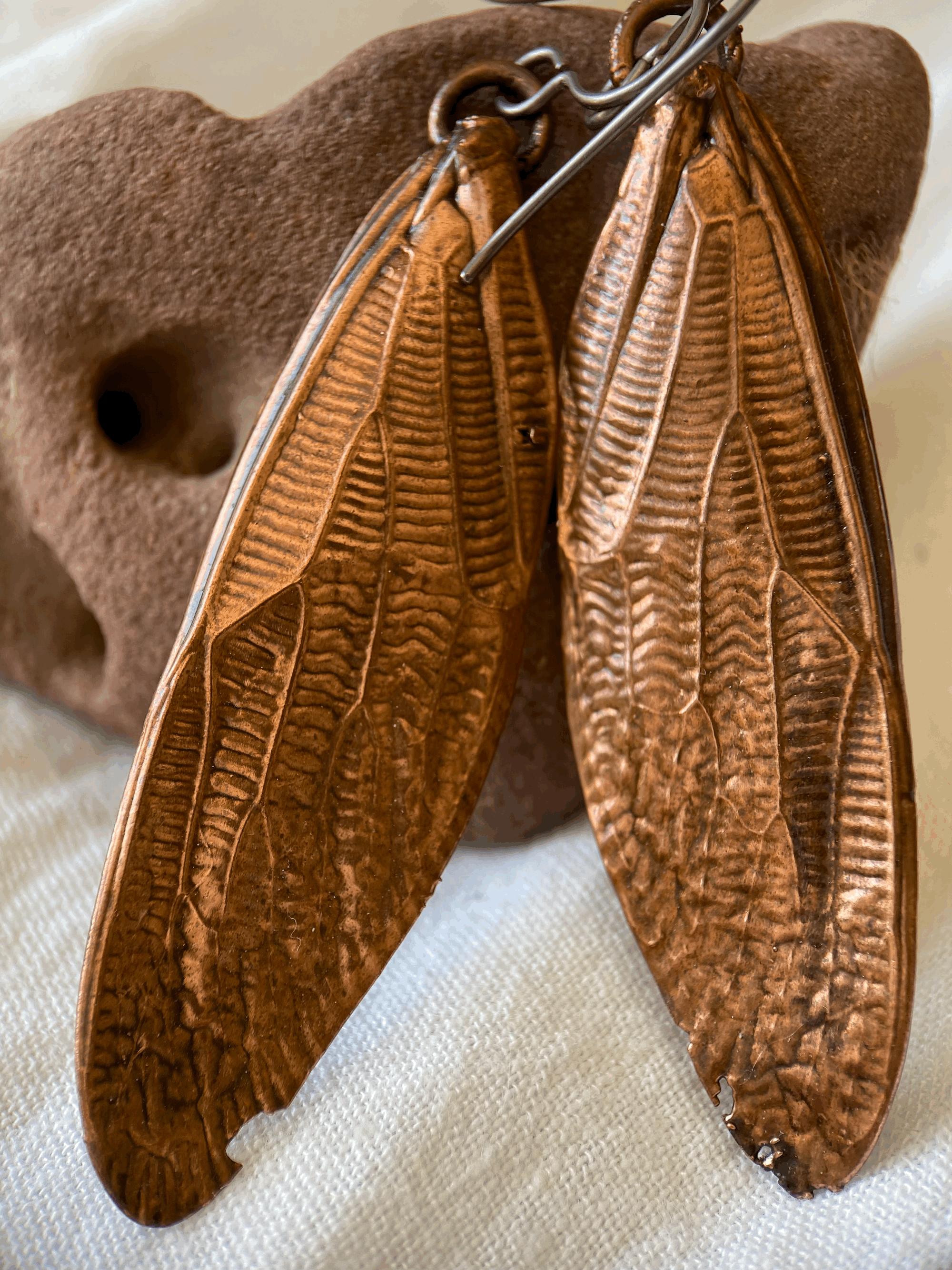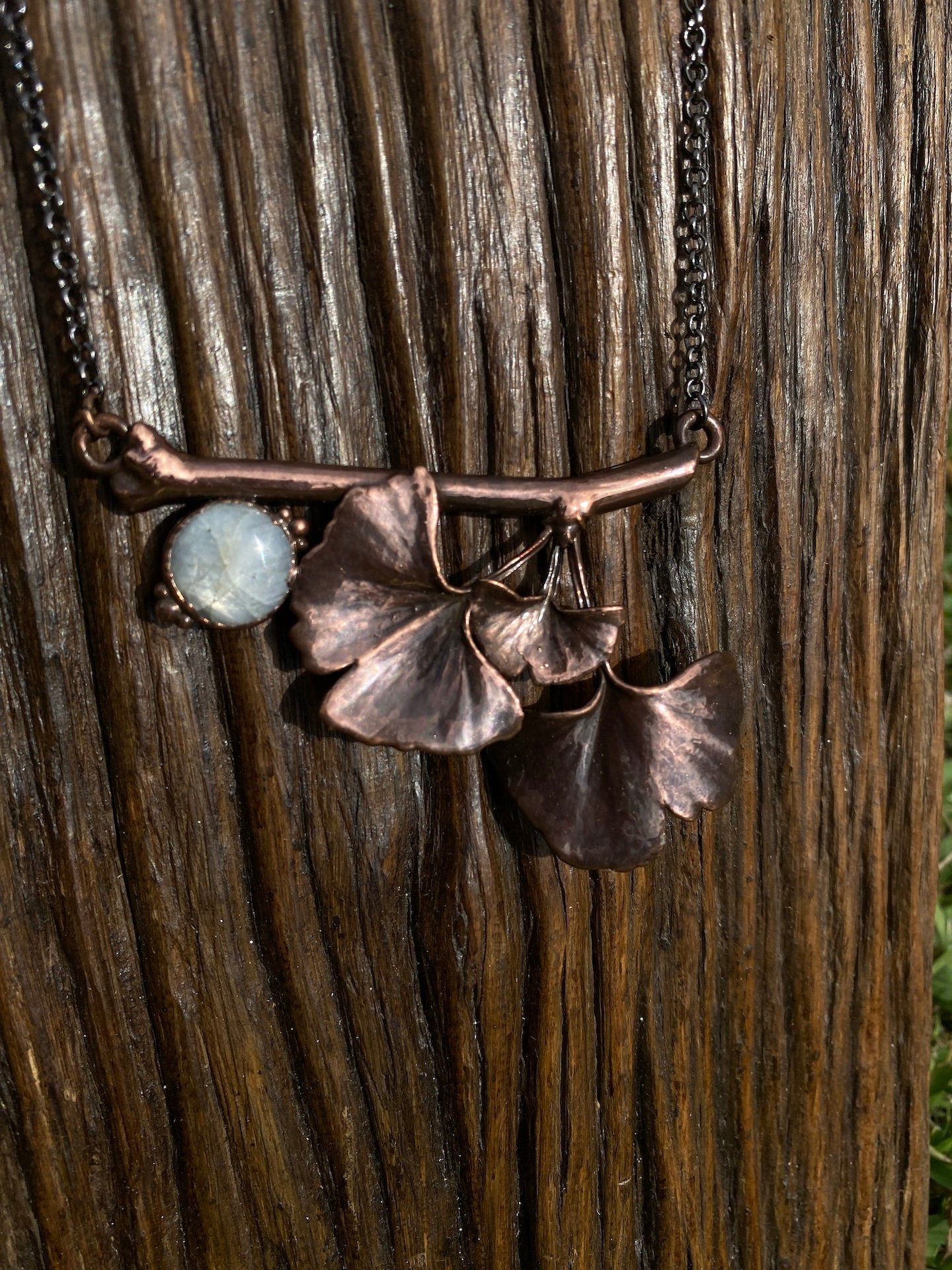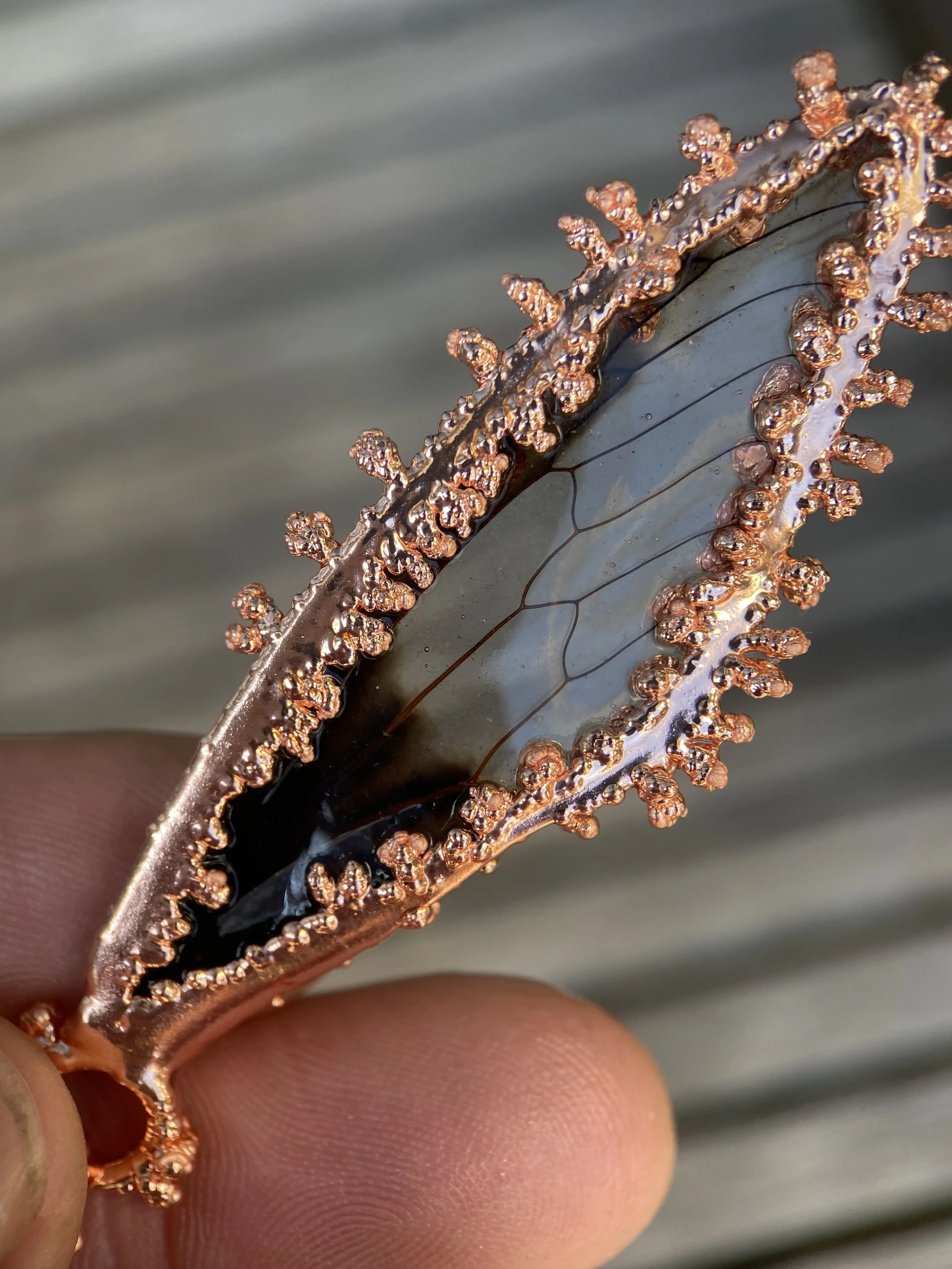I Researched “Water-Proof Jewellery” So You Don’t Have to.
"Waterproof jewellery" is the latest buzzword being splashed across ads and influencer reels — but let me save you some time: it’s mostly marketing fluff for disposable, often drop-shipped..junk. In this post, I’m going to break down what’s actually going on with all these claims, and why you should always read the fine print before diving into that pool with your necklace on.
"Waterproof jewellery" is the latest buzzword being splashed across ads and influencer reels — but let me save you some time: it’s mostly marketing fluff. In this post, I’m going to break down what’s actually going on with all these claims, and why you should always read the fine print before diving into that pool with your necklace on.
"Waterproof" is a Marketing Gimmick, Not an Innovation.
Most brands using the term "waterproof jewellery" are banking on two things:
That you’re uninformed about how jewellery is made,
And that you won’t read the warranty exceptions or terms and conditions.
NO plating, metal coating or metal is invincible. Saltwater, sand, chlorine, soaps, perfumes — they all wear down coatings over time. And most so-called “waterproof” pieces are just PVD-coated stainless steel or very thin gold plating over a base metal.
Let’s talk about what that actually means.
Understanding Plating: PVD, Gold Plated, Vermeil, and Gold Fill
PVD (Physical Vapor Deposition) This is what is marketed as “WATERPROOF”
Used mainly on stainless steel.
Very durable compared to traditional gold plating.
Often marketed as “10x’s thicker than gold plating” — but good luck getting a straight answer on thickness. I contacted several bestselling “waterproof” jewellery brands to ask how many microns thick their PVD coatings actually are. Not a single one replied. NOT ONE.
While PVD is known for its durability, it often misses hard-to-reach areas like the insides of chain links, the backs of hinged earrings, or intricate crevices — leaving parts of the base metal exposed from the start. These missed spots create weak points where moisture, sweat, and skin oils can seep in and start corroding the exposed base metal underneath. Over time, this can cause discolouration, flaking, or even structural weakening of the piece — especially in high-friction areas like clasps and hinges.
Requires a tin layer (or similar) between steel and gold to help adhesion. Stainless steel is a very difficult metal to coat with other metals. Tin is fairly corrosion-resistant, but in humid or salty conditions — like on skin or in the ocean — it can oxidize over time. If exposed due to thin or patchy plating, tin corrosion can weaken the bond between layers and eventually cause the finish to degrade.
PVD-coated jewellery is not easily repairable or re-platable. Once the coating wears down or gets damaged, you can’t just "touch it up" like you might with traditional gold plating. The PVD process requires specialized vacuum equipment and can't be selectively applied to small areas — so repairing a worn section usually means stripping and re-coating the entire piece (which most jewellers don’t offer). In many cases, that makes PVD jewellery essentially disposable once the coating fails. Which is why they so often offer such “seemingly" great value bundle deals- They’re selling you junk.
Gold Plated
Usually just 0.1 to 0.5 microns thick. up to 0.1 microns is what’s called “flash plating”- and it’s mainly used for decorative applications, rather than high wear things like jewellery. 0.5 microns is pretty much the minimum thickness to be classified as gold plated jewellery.
Wears off quickly with daily wear, especially on rings and chains.
To give you perspective, a human hair is about 80 microns thick. So that 0.5 micron plating? Invisible compared to a strand of hair.
Gold Vermeil
Sterling silver base with a thicker layer of gold. To be classified as Vermeil, it must be at least 2.5 microns thick.
Much better quality, much longer lasting, and with a precious metal base- but still not invincible.
Gold Fill
Mechanically bonded thick layer of gold which must be at least 5% of the total weight of the piece.
Gold fill is mostly bonded to brass base metal.
Far more durable than plating or PVD, and more valuable due to it’s higher gold content, even with a brass base.
Gold is a very soft metal — on the Vickers hardness scale, pure gold (24k) measures only 25 Vickers, which is extremely low compared to metals like palladium-my favourite- (400–600 Vickers) or even stainless steel (around 200 Vickers). That softness means gold plating is especially prone to wear from friction, contact with skin, and exposure to water or chemicals — and when the gold layer is just a fraction of a micron thick, it doesn’t take long before it starts to fade.
Palladium Plating: The Unsung Hero
I personally plate a lot of my sterling silver chains with palladium, I also plate my copper electroformed pieces in this amazing luxe metal— and yes, it’s awesome. Why? Because palladium is:
Naturally hypoallergenic
Tarnish-resistant
In the Platinum family (lush luxury!)
Durable (400–600 Vickers hardness, far tougher than silver or gold, and harder than stainless steel!)- Very resistant to scratches, wear and tear
I apply a 1-micron thick palladium layer, one piece at a time, by hand, using the very best eco-and human-friendly chemicals, which I source from Italian brand Legor, true innovators in the metal finishing industry. No mystery metals. No mass production shortcuts.
And when it does eventually wear down? You’re left with solid sterling silver underneath — not brass, not pot metal, not disappointment.
Why I Don’t Offer Gold Finishes (Yet)
I love gold — but I won’t offer it until I can do it properly. That means:
A finish that’s genuinely durable
Pricing that’s fair for you
Materials I can stand behind 100%
I’m still experimenting and researching different methods — gold fill, vermeil, thick-plated silver, and more. When I launch gold options, you’ll know it’s been tested by ME, worn by ME, and worthy of YOU.
What Should Never Go Swimming
Even if something’s plated well, some materials just don’t like water. Here’s what to watch out for:
Pearls: soft, porous, and easily damaged by chlorine or salt.
Turquoise, opals, and other soft stones: they can absorb water, crack, or lose colour.
Copper and brass: tarnish fast when wet.
Delicate solder joins: can weaken or corrode over time.
Jewellery Care Basics
Want your pieces to last longer? Do this:
Take them off before swimming or showering.
Store them dry and clean.
Avoid perfumes, lotions, and hairspray.
Wipe them gently after wearing.
Final Word: Ask Better Questions
Before you buy into “waterproof,” ask:
What’s the base metal? If stainless steel, ask what metal is used in between the steel and “gold”
How thick is the plating or PVD coating, in microns?
What method was used — and by whom?
Is it repairable or replatable?
Make sure you read the fine print.
If the brand can’t or won’t answer those questions, they’re hoping you don’t ask.
Smash the myth. Wear what you love. Stay informed
Disclaimer:
This post is for informational and educational purposes only. It reflects my research, experience, and professional opinion as a maker. All technical data is accurate to the best of my knowledge at the time of writing. I do not reference or critique any specific brands or businesses. Always check product details and warranties carefully before purchasing.
Reframing Mother’s Day
For some, Mother’s Day is a celebration of love and gratitude.
For others, it carries quiet heartache — for the mother they’ve lost, the one they never had, or the child they carry only in memory.
It’s a day that can hold joy, grief, complexity — sometimes all at once.
A beautiful garden gate, backing onto the Merri Creek Path in Coburg Victoria. I do not know the artist who created it, but I would walk past it often…
Honouring love in all its forms
Mother’s Day can be a beautiful celebration — but also a tender, complicated one. For many, it’s a day of flowers, breakfast in bed, and heartfelt gratitude. For others, it carries grief, distance, longing, or silence.
Maybe your mother is no longer here.
Maybe she wasn’t who you needed her to be.
Maybe you’re missing a grandmother, a carer, or someone who raised you in their own quiet way.
Maybe you are a mother who has lost a child — and every day, including this one, holds a weight beyond words.
Or perhaps you’re someone who longs to be a mother, has chosen not to be, or is navigating the complex path of motherhood in a form not easily named.
1984- A very small me, and my Grandmother Melba (Teena)
This year, I’ve been thinking about reframing Mother’s Day —
Not as a single story, but as a moment to honour mother energy as that instinct, woven so deeply into our core beings to create, protect and nurture—wherever it turns up for us in our lives, and how we share that energy with the world
That energy might come from a mentor, a dear friend, or a chosen family member.
It might live in the way we show up for our friends’ children, or the bond we have with our animals.
It might bloom in the ideas we nurture, the businesses we’ve built, the art we’ve made with love and persistence.
It’s in how we care for home, garden and the earth, how we listen deeply, how we soften for those we love.
And it’s in the quiet, powerful work of learning how to mother ourselves.
My dear Mum, Suzanne..and a slightly bigger me…1985?
This day can be joyful, painful, or quietly complicated — and all of that is real, and valid, and welcome.
In my own work, I try to honour these layered stories of love and legacy through my two distinct styles- “The Nature Collection”- which is rooted in nature’s small offerings and “Époque Lumineuse” - giving new life to antique and vintage glass stones and creating future heirlooms.
In my own life, I’ve learned that love is rarely neat. It shows up in chosen family, in memory, in objects passed down, and in the rituals we make for ourselves when the old ones no longer fit.
That’s what I hope my work can reflect —
pieces that honour not just “mothers,” but the people who shape us.
My beautiful Aunt and Godmother, Bernadette
If this day feels joyful for you, I celebrate with you.
If it feels heavy, I’m holding space for that too.
With gentleness,
— Virginia
@electrofawn_
Sign up to my ElectroFawn VIP list below for $15 off your first order, as well as sneak peeks, exclusive early access to new collections of one-off treasures, automatic entry into my regular giveaways….and more x
The Art of Electroforming: Crafting Nature’s Beauty with Recycled Copper
In recent years, electroforming has grown in popularity among artists and jewellery designers for its unique ability to preserve and transform organic materials into durable, wearable art. Electroforming allows artists to capture the intricate details of natural objects, such as leaves, shells, insects, or just about anything you can think of, preserving their beauty and essence in a way that feels both organic and lasting. At the core, it’s a fascinating blend of art and science, and it has its own magical allure for those who appreciate nature and craftsmanship.
“The Descent of Inana” - work in progress. Cicadas are the unofficial spirit animal of electroforming artists worldwide. Their stunning details, durability, and deep symbolism make them perfect subjects for electroforming. They are plentiful during summer, and their brief lifespan after emerging from the ground offers ethical inspiration for artists, allowing them to celebrate life's beauty and diversity without causing harm.
Introduction In recent years, electroforming has grown in popularity among artists and jewellery designers for its unique ability to preserve and transform organic materials into durable, wearable art. Electroforming allows artists to capture the intricate details of natural objects, such as leaves, shells, insects, or just about anything you can think of, preserving their beauty and essence in a way that feels both organic and lasting. At the core, it’s a fascinating blend of art and science, and it has its own magical allure for those who appreciate nature and craftsmanship.
A small cutting from a friend’s gingko tree, preserved and transformed into a beautiful statement necklace, paired with a silky sapphire SOLD
What is Electroforming? Electroforming is a metal-coating process in which objects are covered in a thin, strong and even layer of metal. This is achieved through an electrochemical process, where metal particles from a solution are deposited onto an object in a controlled manner, creating a solid metallic shell over the form. While this technique has industrial roots, artists and jewellery makers have adopted it for its ability to render objects like delicate leaves or intricate twigs in stunning metallic finishes.
A copper electroforming setup features a blue copper electrolyte, an acidic mix with copper sulfate. Jewellery pieces are suspended by wires over the tub, with a small agitator pump and a solid copper anode submerged. Voltage and current are regulated by two devices on the tub's back, and a beaker of distilled water is provided for rinsing.
Electroforming differs from other metal-plating techniques because it allows for thicker, self-supporting layers, creating a durable yet lightweight piece of jewellery that can be worn daily. Copper is the most widely used metal for this process, but people also occasionally utilise silver, or gold, or plate over the copper with these or a variety of finishes to suit different tastes and styles.
A piece of real bracken fern has been preserved by copper electroforming- there are endless possibilities for what you can create with this process!
Why Electroforming? One of the joys of electroforming is how it honours the beauty found in nature’s small wonders. From a fallen leaf to a tiny shell, electroforming enables these pieces to be transformed into wearable art, bringing the intricate patterns and textures of nature into an entirely new light. For artists like myself, who are inspired by the subtleties of the natural world, electroforming is a way to celebrate nature as the ultimate artist, allowing each piece to carry its own story, drawn from the beauty often overlooked in our day-to-day lives.
Another appeal of electroforming is its durability. While organic materials tend to be fragile, covering them in a protective metal layer allows them to last. By electroforming a delicate object, it gains both a tactile presence and a longevity that raw materials alone can’t offer.
Eco-Friendly Practices in Electroforming In my studio, sustainability plays a significant role in how I approach electroforming. My jewellery is made using recycled copper, which both reduces waste and conserves resources. Copper is not only an excellent metal for electroforming due to its conductive properties, but its warm, earthy colour also pairs beautifully with organic shapes and textures, creating jewellery pieces that feel authentic and timeless.
My studio is of my own design, operates entirely off-grid and is powered by solar energy, a decision that reflects my commitment to minimising environmental impact. Working with renewable energy and recycled metals allows me to create art with a lighter footprint, adding another layer of intentionality to each piece I create.
The Process of Electroforming: Step-by-Step If you’re new to electroforming, the process can seem intimidating, but breaking it down into steps makes it more approachable. Here’s a simplified version of the process:
Creating hatpins from foraged cicada wings requires careful sealing with a water-based sealant to protect the wings and the electroforming solution.
Preparation and Sealing: To start, you’ll need to prepare the object. Organic materials, like leaves or flowers, are carefully dried and then coated in a few layers of sealant to protect them during the electroforming process. The sealant also prevents organic matter from decaying beneath the metal layer, ensuring a lasting piece of jewellery. Any gems incorporated into the pieces are also sealed.
Applying a Conductive Layer: Once sealed, the object needs to be coated with a conductive paint, typically containing powdered copper or graphite, which makes the surface of the piece electrically conductive. This step is essential, as it ensures that the metal particles will be attracted to the object during the electroforming process.
Setting Up the Electroforming Bath: The object is then submerged in an electroforming solution, usually a copper sulfate bath, along with a piece of copper to act as the metal source. When an electrical current passes through the solution, copper ions are drawn to the conductive layer on the object, depositing a layer of metal.
Control and Patience: Electroforming is a time-intensive process that requires monitoring. Depending on the size and intricacy of the object, the process can take anywhere from several hours to a couple of days. This slow build-up of metal gives artists control over the thickness and finish of the piece, allowing for a range of styles, from delicately thin layers to bold, substantial forms.
Finishing Touches: Once the electroforming process is complete, the piece is removed from the bath, rinsed, and dried. For a polished look, I sometimes add a silver or 24-carat gold finish over the copper, offering a range of styles and colours to suit different preferences. Most often I use a solution to create a “patina” on the metal, which darkens the piece. It is then gently polished to remove the excess patina, highlighting the beautiful natural textures of the piece. Each piece is then treated with a food grade metal protective coating and cured prior to selling.
Incorporating the Elements of Wabi-Sabi For me, electroforming aligns with the Japanese concept of wabi-sabi, which celebrates the beauty of imperfection, transience, and the effect of time on all things. The objects I select, like leaves or insect wings, naturally bear the marks of their life – tiny nicks, veins, and variations that add character and individuality to each piece. Electroforming captures these imperfections and preserves them in metal, highlighting that beauty doesn’t lie in uniformity but in the unique characteristics of each object.
“hag stones”- a wonderful example of the Japanese philosophical concept of Wabi-Sabi.
Challenges and Rewards of Electroforming Like any art form, electroforming has its challenges. The process requires careful handling of chemicals, precise timing, and a lot of patience. Getting the desired thickness without losing delicate details takes practice, and every object presents a new set of variables to consider. But these challenges are also what make the work so rewarding. The satisfaction of unveiling a finished piece is well worth the time and care put into the process.
A lovely accident! Dendritic growth on some recent pieces happened because of too much electrical current for too long. Even experienced artists can make mistakes, but it’s fascinating to see how electricity and copper interact when they're given freedom!
A Sustainable, Personal Art Form In a world where jewellery can often be mass-produced and disconnected from its origins, electroforming offers a deeply personal and sustainable approach. Each piece I create is not just a piece of jewellery but a small, tangible connection to nature, preserved in a way that honours its original form and meaning. Customers who wear my pieces are often drawn to them for this reason, as they feel like they’re wearing a part of the natural world – something both grounding and inspiring.
Conclusion Electroforming is more than a technique; it’s a journey of discovery, patience, and appreciation for the natural world. By transforming ordinary leaves, shells, or other found objects into wearable art, electroforming allows us to carry a piece of nature with us, a reminder of the beauty that exists in the tiny, often overlooked details of our world. For those interested in jewellery that honours nature and sustainability, electroforming offers a unique and meaningful approach, where every piece carries a story, preserving both the artistry of the natural world and the care taken to honour it.














